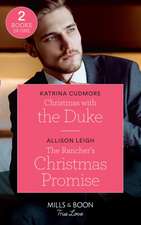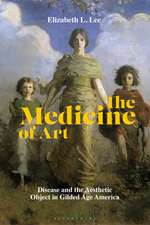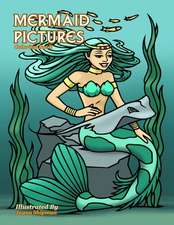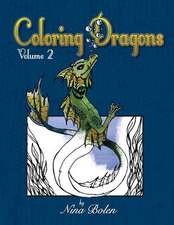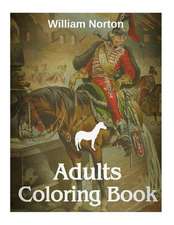Picturing Russia’s Men: Masculinity and Modernity in Nineteenth-Century Painting
Autor Allison Leighen Limba Engleză Paperback – 14 dec 2022
Preț: 168.15 lei
Preț vechi: 193.83 lei
-13% Nou
Puncte Express: 252
Preț estimativ în valută:
32.17€ • 33.68$ • 26.62£
32.17€ • 33.68$ • 26.62£
Carte disponibilă
Livrare economică 15-29 martie
Livrare express 04-08 martie pentru 55.61 lei
Preluare comenzi: 021 569.72.76
Specificații
ISBN-13: 9781350282742
ISBN-10: 135028274X
Pagini: 296
Ilustrații: 16 color and 60 bw illus
Dimensiuni: 156 x 234 x 22 mm
Greutate: 0.45 kg
Editura: Bloomsbury Publishing
Colecția Bloomsbury Visual Arts
Locul publicării:London, United Kingdom
ISBN-10: 135028274X
Pagini: 296
Ilustrații: 16 color and 60 bw illus
Dimensiuni: 156 x 234 x 22 mm
Greutate: 0.45 kg
Editura: Bloomsbury Publishing
Colecția Bloomsbury Visual Arts
Locul publicării:London, United Kingdom
Caracteristici
A radical revision of scholarly understandings of the relationship between Russia and the West before the twentieth century
Notă biografică
Allison Leigh is Assistant Professor of Art History and the SLEMCO/LEQSF Regents Endowed Professor in Art and Architecture at the University of Louisiana at Lafayette, USA. She is a specialist in European and Russian art of the eighteenth and nineteenth centuries and her writing focuses primarily on the development of new art historical methodologies, masculinity studies, and the history modernism.
Cuprins
List of IllustrationsAcknowledgmentsNote on TranslationsIntroductionPart 1: Autocratic Masculinity1. Karl Briullov: Fathers, Brothers, Husbands, and Sons2. Pavel Fedotov: Comrade-Captain-ArtistPart 2: Homosociality and Homoeroticism3. Alexander Ivanov: Desire and the Male Nude4. The Artel of Artists: Envisioning the Bonds of MenPart 3: Modern Women and their Wounded Men5. Ivan Kramskoi: Painting Women-Known and Unknown6. Ilia Repin: On Masculine VulnerabilityConclusionSelected BibliographyIndex
Recenzii
Engaging with a remarkable spectrum of behaviors, expectations, violations, and stereotypes, this book generates new understanding of masculinity and modernity by considering paintings as revelatory, questioning, and even constitutive of what it meant to be a man during a turbulent half-century of imperial rule.
By exploring the myths and pressures of masculinity that shaped male experience in Imperial Russia after Napoleon, Allison Leigh offers compelling new perspectives on five of Russia's best-known nineteenth century painters. Beautifully illustrated, full of incisive new readings of familiar paintings, Picturing Russia's Men excavates the innumerable ways in which the institutions of academy, army, and family shaped the male artist's identity and output. With its blend of close reading, theoretical sophistication, and wide-ranging research, this fine study brilliantly dispels the common misperception that there is little more to be said about Russian painting of the nineteenth century.
An important and eye-opening contribution to the Slavic field and our studies of modernism in Russia. Through an examination of male portraiture, it traces the breakdown, between 1825 and 1881, of various myths surrounding masculinity-from the solid heroic code of virtuous, courageous manhood to the ambiguities of doubt-ridden individualism.
By exploring the myths and pressures of masculinity that shaped male experience in Imperial Russia after Napoleon, Allison Leigh offers compelling new perspectives on five of Russia's best-known nineteenth century painters. Beautifully illustrated, full of incisive new readings of familiar paintings, Picturing Russia's Men excavates the innumerable ways in which the institutions of academy, army, and family shaped the male artist's identity and output. With its blend of close reading, theoretical sophistication, and wide-ranging research, this fine study brilliantly dispels the common misperception that there is little more to be said about Russian painting of the nineteenth century.
An important and eye-opening contribution to the Slavic field and our studies of modernism in Russia. Through an examination of male portraiture, it traces the breakdown, between 1825 and 1881, of various myths surrounding masculinity-from the solid heroic code of virtuous, courageous manhood to the ambiguities of doubt-ridden individualism.

